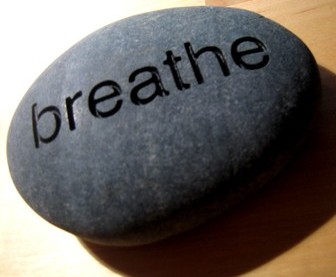As individuals trying to make a difference, we strive to be engaged in life…seeking our peak performance in all we do.
Still, biological research tells us that during the day we move from a state of alertness progressively into physiological fatigue approximately every 90 minutes. Then the pounding of 90 minutes—on top of 90 minutes—on top of 90 minutes—leads to diminished performance in body and mind. We experience the physiological and psychological effects of stress.
It is important—it is self-responsible—to take positive energy breaks to reinvigorate ourselves and reduce the inevitable effects of the stress response—most beneficially every 90 minutes or so throughout the day.
The good news is that we can learn simple ways to refresh and invigorate. The most effective method of renewal for our mind and body is exercise. Unfortunately while in the classroom or at work a good bout of aerobic exercise or resistance training may not be possible or appropriate.
But we can always breathe.
Deep breathing is a simple but effective method of relaxation and reducing stress. Breathing is something we all do, our entire lives, and something to which we rarely pay much attention. Focusing on breathing is one of the easiest ways to take a stress break and reinvigorate.
To break the 90-minute cycle is particularly important if we need to think clearly and perform precisely when you are under pressure.
Breathing Exercises are particularly helpful for both handling nerves prior to an important performance, and reducing stress generally. We can practice these methods anytime and almost any place during the day—you will notice over time that you’re handling the day better and your performance is more balanced.
Breathing exercises are commonly recommended for good reason:
- They work quickly.
- We can do them anywhere.
- They take very little practice to master.
There are many breathing exercise techniques that have proven to be beneficial. One such exercise tested in clinical protocol is referred to as the 4-7-8 Relaxing Breath Exercise. This exercise is simple, takes almost no time, and can be done anywhere.
Give it a try.
Sit with your back straight. Place the tip of your tongue against the ridge of tissue just behind your upper front teeth, and keep it there through the entire exercise. You will be exhaling through your mouth around your tongue; try pursing your lips slightly if this seems awkward.
-
Exhale completely through your mouth, making a whoosh sound.
-
Close your mouth and inhale quietly through your nose to a mental count of four (4).
-
Hold your breath for a count of seven (7).
-
Exhale completely through your mouth, making a whoosh sound to a count of eight (8).
-
This is one breath. Now inhale again and repeat the cycle three more times for a total of four breaths.
Note that you always inhale quietly through your nose and exhale audibly through your mouth.
Exhalation takes twice as long as inhalation. With practice you can slow it all down and get used to inhaling and exhaling more and more deeply.
Start by doing four 4-7-8 breaths at one time for the first month of practice and later extend it to eight breaths.
Use breathing as another one of your tools to stay in your peak performance zone.

